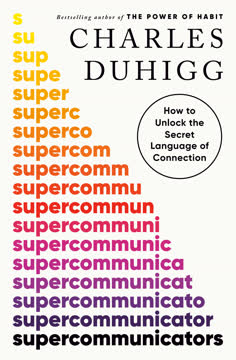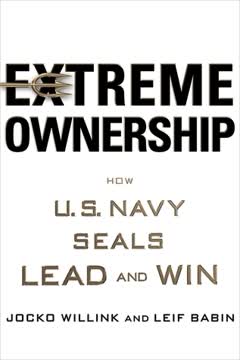重点摘要
1. 产品管理:产品的商业管理
产品管理是对产品、产品线或产品组合进行全方位的商业管理,以在其生命周期内*大化价值创造。
全方位的商业方法。 产品管理不仅仅是开发功能或管理项目。它是关于在更大的组织内像经营一个小型企业一样管理产品。这涉及全面了解市场、客户、财务和运营。
跨职能领导。 产品经理必须跨越各个部门工作,在没有权威的情况下进行影响。他们需要建立关系,有效沟通,并领导跨职能团队以实现产品成功。
战略与战术的平衡。 成功的产品经理在战略思维和战术执行之间取得平衡。他们必须:
- 制定愿景和战略
- 分析市场和竞争
- 优先考虑功能和路线图
- 监督开发和发布
- 监控性能并进行迭代
2. 了解客户至关重要
如果你不知道你的客户是谁,或者在识别客户时出错,你的伟大产品创意将无法面世。
以客户为中心的思维。 产品经理必须深入了解客户的需求、痛点和行为。这包括:
- 有效地细分市场
- 创建详细的客户画像
- 绘制客户旅程
- 定期进行客户访谈和观察
同理心与数据。 成功的产品经理将同理心与数据驱动的洞察相结合。他们使用用户访谈和观察等定性方法,以及来自调查、使用分析和市场研究的定量数据。
持续学习。 客户需求在不断演变,因此产品经理必须不断更新他们的理解。这包括:
- 定期与客户互动
- 分析反馈和支持票
- 监控使用模式和趋势
- 密切关注市场变化
3. 市场和竞争情报驱动战略
如果你不考虑细分市场,你就没有在思考。考虑细分市场意味着你必须思考是什么驱动客户、客户群体以及他们可能有的选择。
全面的市场分析。 产品经理必须使用PRESTO(政治、监管、经济、社会、技术、其他)等框架来了解行业格局。这为战略决策提供了背景。
竞争情报。 收集和分析竞争对手信息至关重要。这包括:
- 产品比较
- 定价策略
- 营销策略
- 技术和专利
- 商业模式
动态监控。 市场和竞争在快速变化。产品经理需要系统地持续收集和分析情报,并相应调整策略。
4. 制定动态产品战略和路线图
战略是一种创造性的练习。虽然有一个相对步骤的战略制定过程,但它不是机械的分析。
愿景和目标。 产品战略始于对未来的清晰愿景和具体、可衡量的目标。这为整个团队提供了方向和焦点。
数据驱动的综合。 有效的战略结合了市场、客户和内部数据。SWOT分析等工具有助于将这些信息综合成可操作的洞察。
灵活的路线图。 产品路线图应:
- 与公司战略一致
- 基于客户需求和市场机会
- 足够灵活以适应变化的条件
- 清晰地传达给利益相关者
持续迭代。 战略不是一次性的练习。它需要根据新信息和变化的市场条件定期审查和调整。
5. 从战略到执行:规划和开发
没有充分验证与愿景和目标一致的机会,但获得投资资金的机会往往会失败。
严格的机会评估。 产品经理必须根据战略目标、市场需求和财务预测评估潜在投资。这包括:
- 创建商业案例
- 验证价值主张
- 优先考虑功能
敏捷和灵活的开发。 虽然过程各不相同,但成功的产品开发需要:
- 明确的需求或用户故事
- 产品和开发团队之间的密切合作
- 定期测试和客户验证
- 根据新信息进行调整的能力
管理权衡。 产品经理必须不断平衡竞争优先级:
- 功能与时间表
- 质量与速度
- 创新与稳定
6. 成功推出产品
产品发布是产品生命周期中*为显著的活动之一。它不是一次性事件,而是一系列活动,在一段时间内进行,*终向市场发布。
全面的发布计划。 成功的发布需要多个部门的协调:
- 营销和沟通
- 销售和渠道准备
- 运营和支持准备
- 法律和合规考虑
市场时机。 选择合适的市场窗口至关重要。考虑:
- 竞争格局
- 客户购买周期
- 行业事件和趋势
衡量成功。 定义清晰的发布成功指标,例如:
- 采用率
- 收入目标
- 客户满意度评分
- 市场份额目标
7. 数据驱动的产品性能管理
指标是关键。指标允许你量化、评估、诊断和解释发现,并考虑未来的选择。
全方位的性能跟踪。 产品经理必须监控各种指标:
- 财务:收入、利润率、客户终身价值
- 市场:市场份额、采用率、竞争地位
- 运营:客户满意度、支持票、功能使用
产品生命周期管理。 了解产品在其生命周期中的位置(增长、成熟、衰退)有助于制定投资、定价和功能开发的战略决策。
持续优化。 使用数据驱动持续改进:
- A/B测试功能
- 定价实验
- 营销活动优化
- 产品组合调整
用数据讲故事。 有效的产品经理不仅收集数据,还使用数据向利益相关者讲述关于产品性能和市场机会的引人入胜的故事。
最后更新日期:
FAQ
What's The Product Manager's Survival Guide about?
- Comprehensive Resource: The Product Manager's Survival Guide by Steven Haines is a detailed resource for both aspiring and current product managers, covering essential skills and knowledge needed to succeed.
- Adapting to Change: It emphasizes the importance of adapting to the evolving business environment, highlighting that transformation is key in product management.
- Practical Frameworks: The book provides practical insights, frameworks, and tools to help product managers navigate their responsibilities effectively.
Why should I read The Product Manager's Survival Guide?
- Foundational Knowledge: Ideal for understanding the fundamentals of product management, making it a great starting point for newcomers.
- Real-World Applications: Includes practical advice and methodologies that can be applied immediately in a product management role.
- Expert Guidance: Offers insights from an experienced product management professional to help avoid common pitfalls and accelerate career growth.
What are the key takeaways of The Product Manager's Survival Guide?
- Role Clarity: Understanding the distinct responsibilities of a product manager versus other roles is crucial for success.
- Customer Focus: Emphasizes the importance of knowing your customers and their needs through direct interaction.
- Strategic Thinking: Encourages adopting a strategic mindset, continuously evaluating market conditions and adjusting product strategies.
What are the best quotes from The Product Manager's Survival Guide and what do they mean?
- "Business is business": Highlights that fundamental business principles remain constant, even as practices evolve.
- "You can easily feel overwhelmed": Reflects the fast-paced nature of product management, where urgent tasks can distract from strategic thinking.
- "Products are moving targets": Emphasizes the need for flexibility and adaptability as customer needs and market conditions change rapidly.
What is the role of a product manager according to The Product Manager's Survival Guide?
- Business Manager: A product manager integrates and synchronizes the work of various functions to ensure product success.
- Cross-Functional Leader: Requires strong interpersonal skills to influence and collaborate with others who do not report directly to them.
- Customer Advocate: Must deeply understand customer needs and market dynamics to create products that deliver value.
How does The Product Manager's Survival Guide define product management?
- Holistic Approach: Described as the business management of products, product lines, or portfolios for maximum value creation.
- Dynamic System: Emphasizes that product management involves continuous iteration and improvement.
- Integration of Functions: Requires collaboration across various business functions, understanding how different parts of the organization work together.
What strategies does The Product Manager's Survival Guide suggest for navigating an organization?
- Build Relationships: Establishing strong relationships across departments is crucial for effective collaboration and influence.
- Create Organizational Maps: Developing diagrams that outline roles and responsibilities can help understand organizational dynamics.
- Engage with Stakeholders: Regular communication and updates with key stakeholders ensure alignment and facilitate smoother project execution.
What methods does The Product Manager's Survival Guide recommend for gathering customer insights?
- Customer Observations: Spending time observing customers in their natural environments can yield valuable insights.
- Interviews and Feedback: Conducting interviews and soliciting feedback directly from customers helps understand pain points.
- Data Analysis: Utilizing digital footprints and customer feedback data provides quantitative insights for product decisions.
How does The Product Manager's Survival Guide address product strategy formulation?
- Dynamic Strategy: Emphasizes that product strategies should be flexible and adaptable to changing market conditions.
- Cascading Strategies: Aligning product strategies with broader company strategies ensures coherence and support.
- Continuous Evaluation: Encourages regular assessment and adjustment of strategies based on performance metrics and market feedback.
What is the significance of competitive intelligence in The Product Manager's Survival Guide?
- Market Awareness: Understanding competitors and industry trends is essential for positioning products effectively.
- Data Collection: Outlines methods for gathering competitive intelligence, including analyzing competitors' strategies.
- Strategic Decision-Making: Competitive insights enable informed decisions that enhance market position and drive success.
What is the SWOT analysis mentioned in The Product Manager's Survival Guide?
- Strategic Planning Tool: SWOT stands for Strengths, Weaknesses, Opportunities, and Threats, used to evaluate a product's market position.
- Data-Driven Insights: Each quadrant should be supported by verifiable data for accurate assessments and planning.
- Holistic View: Analyzing these areas helps develop a comprehensive understanding of the competitive landscape.
How does The Product Manager's Survival Guide address collaboration?
- Cross-Functional Teams: Emphasizes building and working within cross-functional teams to leverage diverse expertise.
- Communication is Essential: Effective communication aligns goals and ensures everyone is on the same page regarding strategy.
- Shared Accountability: Advocates for shared ownership of product outcomes, encouraging responsibility for contributions to success.
评论
《产品经理生存指南》评价褒贬不一。有些人称赞它是新产品经理的优秀概述,提供了宝贵的见解和框架。另一些人则认为它过于基础、重复且缺乏具体例子。正面评价强调了它对产品经理职责和职业指导的全面覆盖。批评者认为它过于泛泛且过时。总体来说,这本书推荐给那些刚入门产品管理或希望复习基础知识的人,但有经验的产品经理可能会觉得价值有限。总的来说,它被视为理解产品管理广泛范围的有用资源。
Similar Books















